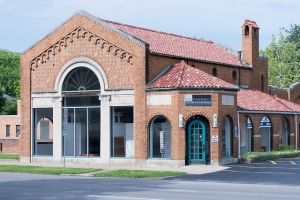Support migrant centric journalism today and donate

Universities and other United States schools are struggling to find enough students from foreign countries to fill their quotas. Most states and schools set a number of students they wish to admit each semester to ensure a high diversity in their student population. Due to many factors, there has been a drop in foreign student admissions in the past several years.
Obtaining a J-1 student visa has become more difficult, along with most visa categories. Enhanced security in many western nations has changed the application process, making it more difficult than in previous years. Changes in forms along with the amount of information and support documentation have made obtaining visas a more challenging process.
There have been other recent changes, such as residency requirements and background checks, too. Professional services are becoming more necessary for most immigrants.
In the U.S., even relatively simple student visas are no longer easy. This is causing difficulties for universities. Most schools recognize that a student population with diverse ethnic and educational backgrounds is important for a strong academic environment, so they work hard to recruit students from around the world.
In the past several years, there has been a marked decline in foreign students. Schools are very interested in understanding exactly why, and in correcting the situation.
Following a four-year decline, American universities are taking steps to correct the situation. Advice and assistance are being offered, and many students are being directed to specialty services that have professional experience and knowledge of the immigration process.
Foreign student enrollment slid 2.4 percent in 2003-04 and another 1.3 percent last year, even as overall student enrollments rose, according to the Institute of International Education. The decline marks the first decrease in foreign student numbers in three decades.
Many universities depend on foreign graduate students for research and teaching assistance - particularly in engineering and sciences. A majority of these students contribute to technological and scientific research projects on and off-campus while some go on to take up teaching positions in American colleges and universities.
Not only are students needed to attend classrooms but, more importantly, advanced students are needed to fill research positions. These are the students that generally go on to fill teaching positions and, eventually, obtain the most advanced degrees in academia. While the U.S. has seen an increase in American student enrollment, it has not kept up with demand.
Also unnoticed is the drop in students participating in exchange programs at the secondary school level. For several reasons, some debatable, American high schools (grades nine through twelve) have seen a decline in students willing to visit the U.S. for a year or two prior to graduation. Usually students in grades 11 or 12 participate, although it is common for 10th graders, too.
All require J-1 visas, and the attendant academic credentials and passport clearances. Each year so far this century, more than half a million students visit the U.S. Universities and high schools think that up to one million could be accommodated easily, if they qualify both academically and in their background checks.
At the graduate level, foreign students are a key component and comprise 1/3 of the total graduate student population. Recently some departments saw a saw a 30 percent decline in graduate student applications.
For example, majority of the 36.5 percent of the 9,188 international graduate students at the University of Illinois gravitated toward programs in engineering and the sciences in fall of 2005.
There is also an increased competition from the United Kingdom, Australia, Canada and even China for international students, as these countries step up recruitment. Most of this competition has modeled itself after the U.S. system, which still remains the best in the world.
European universities have launched massive efforts to streamline their doctoral degrees so they can be completed in three or four years, rather than the five or six generally required at U.S. universities. As China and India have emerged to be economic powerhouses, they have expanded their higher education offerings. For example, there has been a 44 percent increase in undergraduate enrollments in China's Shanghai region over the past few years.
There is the Protecting America's Competitive Edge Act introduced in January 2006 and aimed at bolstering U.S. competitiveness in science and technology. The proposal, which has backing from senators in both parties, was based on a report by the National Academy of Science. One of the key recommendations of this report is to "develop, recruit and retain top students, scientists and engineers from both the U.S. and abroad."
Visa processing time has also improved after the post-9/11 slowdown, and the government has boosted staffing in some consulates. Educators and policy-makers need to continue efforts to get the word out that America's doors are open to international students.
Related:• Foreign students to the US skip out on J-1 visas, become national criminals
• US needs computer game programmers
• US courts and legal services require multi-lingual professionals
• Engineers needed for UK skill shortage
• New work permits for foreign students
• Education initiative to attract students to Europe
• EU and EEA labor market trends
• Dublin, Ireland being called the "brain gain" capital





















